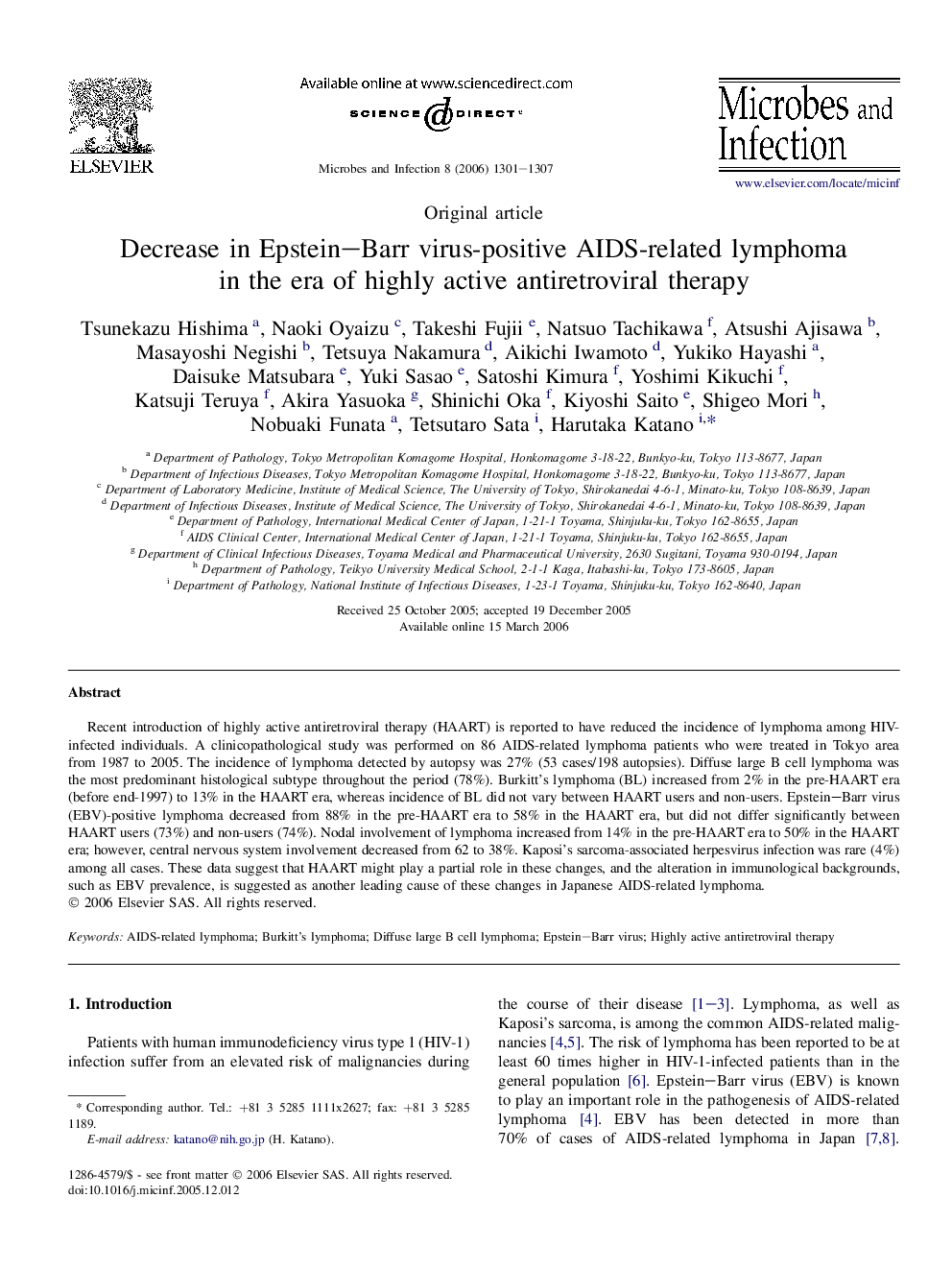| Article ID | Journal | Published Year | Pages | File Type |
|---|---|---|---|---|
| 3415611 | Microbes and Infection | 2006 | 7 Pages |
Abstract
Recent introduction of highly active antiretroviral therapy (HAART) is reported to have reduced the incidence of lymphoma among HIV-infected individuals. A clinicopathological study was performed on 86 AIDS-related lymphoma patients who were treated in Tokyo area from 1987 to 2005. The incidence of lymphoma detected by autopsy was 27% (53 cases/198 autopsies). Diffuse large B cell lymphoma was the most predominant histological subtype throughout the period (78%). Burkitt's lymphoma (BL) increased from 2% in the pre-HAART era (before end-1997) to 13% in the HAART era, whereas incidence of BL did not vary between HAART users and non-users. Epstein-Barr virus (EBV)-positive lymphoma decreased from 88% in the pre-HAART era to 58% in the HAART era, but did not differ significantly between HAART users (73%) and non-users (74%). Nodal involvement of lymphoma increased from 14% in the pre-HAART era to 50% in the HAART era; however, central nervous system involvement decreased from 62 to 38%. Kaposi's sarcoma-associated herpesvirus infection was rare (4%) among all cases. These data suggest that HAART might play a partial role in these changes, and the alteration in immunological backgrounds, such as EBV prevalence, is suggested as another leading cause of these changes in Japanese AIDS-related lymphoma.
Keywords
Related Topics
Life Sciences
Immunology and Microbiology
Immunology
Authors
Tsunekazu Hishima, Naoki Oyaizu, Takeshi Fujii, Natsuo Tachikawa, Atsushi Ajisawa, Masayoshi Negishi, Tetsuya Nakamura, Aikichi Iwamoto, Yukiko Hayashi, Daisuke Matsubara, Yuki Sasao, Satoshi Kimura, Yoshimi Kikuchi, Katsuji Teruya, Akira Yasuoka,
